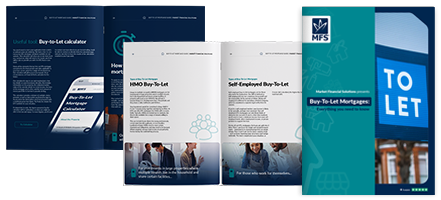Market Financial Solutions are a bridging loan and buy-to-let mortgage provider and are not legal, financial, investment or tax advisers. This document is for informational purposes only and does not, and should not be considered, to constitute legal, financial, investment or tax advice or be relied upon by any person to make a legal, financial, investment or tax decision. Therefore, Investors are encouraged to seek appropriate professional advice. The information in this content is correct at time of writing.

Despite there being demand for property in the current market, investors are facing up against a challenging set of circumstances. A shortfall of options is creating a “frenzied” rental market according to surveyors. Meanwhile, on the homeownership side of things, first-time buyers recently emerged as a surprising source of activity, preventing prices from plummeting.
What’s more, recent evidence suggest activity in the market has returned to levels that rival pre-Covid. Participants have adapted – shaking off much of the pandemic’s damage.
Yet, many property investors are still being held back. According to RICS sales, new listings, and house prices were struggling against a “weak market backdrop” in 2023, which continued into 2024. While there’s many reasons for this, a decreased mortgage availability is likely the common denominator for all property investors at the moment. From single homeowners, through to portfolio landlords.
What’s causing this, and why is mortgage lending tightening? To provide you with some answers to these questions, along with what may be on the horizon, this blog will break down everything you need to know.
Source: BBC, The Telegraph, Property Reporter, Financial Reporter
Why is mortgage availability decreasing?
Generally, many lenders are anxious. The future looks uncertain. It can be hard to offer a mortgage product created with decades in mind when the next couple of years alone are hard to quantify.
Many different elements came together at once to add to this uncertainty. The cost-of-living crisis, war in Ukraine, base rate hikes, and more all created a difficult economy to operate in. Arguably though, the mini-Budget had the biggest impact of all.
Mike Cook, our Chief Mortgage Officer, put it in layman’s terms: “After Liz Truss’ disastrous miscalculation, the market and a lot of funders were spooked. Smaller lenders – and we see more and more of this – still look ahead with a large lending and credit appetite.
“But the reality is they don’t have a lot of funding behind them. It forces them to be picky behind the scenes. This is why having multiple institutional funding lines behind us is such a strength for Market Financial Solutions. We never stopped lending throughout this period, even as high street banks retreated from the market.”
Indeed, almost overnight, mortgage providers pulled hundreds of deals from the shelves as panic set in. With mortgage availablility dwindeling, many had difficulties to find deals in the first place.
What’s more, to reflect the continued uncertainty, the mortgages that remained became especially costly and unobtainable for many. Many lenders hiked rates on both their residential and Buy-to-Let mortgages with barely any notice.
Declining house prices and rising costs
Mike also noted house price “wobbles” likely made lenders – and their credit risk executives – worry about mortgage affordability. In the months that followed the mini-Budget, on average, property prices across the UK marginal declined, according to Land Registry data. This bucked the trend of rising prices we saw in the months leading up to September 2022, jumping by around £20,000.
And while property prices began to marginally decline, other costs started to rise. Base rate hikes, an energy crisis, and runaway inflation dominated the 2nd half of 2022. Mainstream lenders likely became increasingly worried about customers repaying their loans at all – especially their BTL mortgages.
When addressing the question of mortgage availability, you’ll want to think about rental income and interest rates. Generally, lenders assess affordability for BTL mortgages by comparing gross rental incomes with interest payments via an interest coverage ratio (ICR). As such, where mortgage costs rise, landlords need to raise rent accordingly. Banks typically need an ICR of between 125% and 145%.
But, as we saw sharp rises in mortgage rates, ICR calculations were skewed. Mortgage rates rose, but rents didn’t keep pace, according to analysis from Carl Summers Financial Services.
Fortunately, since September 2022, there has been a recovery in general mortgage availability. The total number of UK mortgage products, both residential and Buy-to-Let, has rebounded, while approvals have hit a 17-month high. Still, criteria is still tight across the market, making it challenging for many borrowers to progress.
Source: The Telegraph, The Guardian, FT Adviser, Land Registry, Land Registry, Moneyfacts, Financial Times, Moneyfacts, The Sun

Are more mortgages available now and what about the future?
Fortunately, cooler heads prevailed in the months following the mini-Budget. Questions about mortgage availability may be asked less frequently soon. Jeremy Hunt, calmed the wider markets with a package of tax incentives, spending cuts, extended childcare support, and pension reforms. Fast forward to the 2024 spring Budget, and further tax cuts and property changes were announced.
But while we all want to remain hopeful that this optimism continues to flow, storm clouds may be gathering. Defaults are on the rise, which may result in fewer mortgages being approved. Meanwhile, affordability still remains a key issue.
Looking ahead, new legislation may hinder lender’s ability – or willingness – to engage with Buy-to-Let investors. The Renters’ Reform Bill has now passed in the House of Commons, adding another layer of uncertainty that banks need to factor in.
Then there’s the international regulations to consider. Mike explained: “Basel III, coming in 2025, means banks have to put aside more capital against riskier lending. This may limit how much funding is available for the day-to-day stuff.”
Source: The Times, The Times, i news, The Sun, City A.M., The Telegraph, The Guardian, FT Adviser, i news
So how do we fit in?
If you’re struggling against mortgage availability on the high street, we’re here for you. Mainstream banks tend to adhere to rigid tick-box lending criteria. It seems more boxes are constantly being added to the list, and only the most straightforward cases are hitting the requirements.
But, we don’t follow rigid criteria assessments for our buy-to-let mortgages and bridging loans. Every claim we assess on its own merits. We won’t let the pessimism in the wider market sway your potential. Rather than threat over the headlines, we’ll focus on your specific investment, the exit strategy at hand, and the property’s potential.
We always look for reasons to lend, even in the direst of economic circumstances. Since our founding in 2006, we have supported property investors despite various crashes, political uncertainty, and a worldwide pandemic.
We’ll continue to do so in the face of high street lending hesitancy, challenging legislation, and rising costs. We can help you find a satisfying solution to the question of limited mortgage availability.
The Complete Guide to
Buy-to-Let Mortgages
Everything you need to know
- Fundamentals
- Different mortgage types
- Useful tools
- Industry stats & more






